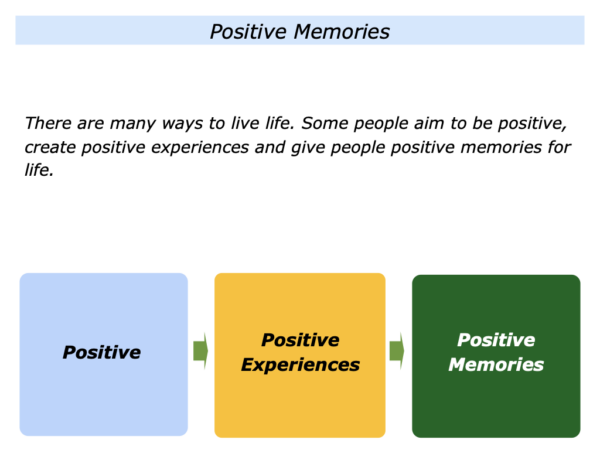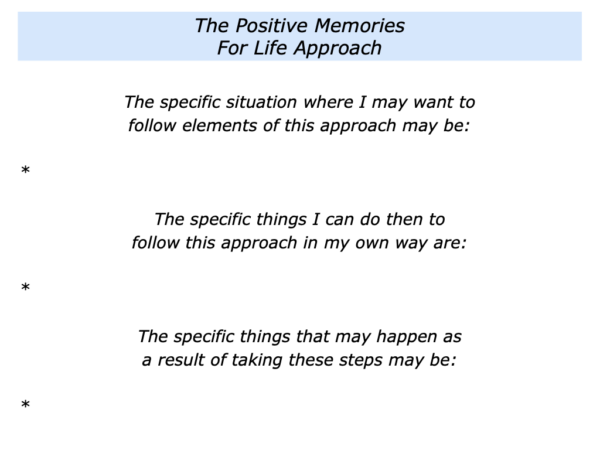
Some people aim to encourage others in their personal and professional lives. They aim to be positive, create positive experiences and give people positive memories for life. Let’s look at some examples.
Parents That Create
Positive Memories For Life
Many parents say they want their children to be happy. They therefore aim to create a loving environment in which children feel safe, encouraged and able to develop.
They also encourage their children to explore. They take them to places where they can play, build relationships and sometimes get positive memories for life.
Such parents encourage their children to be the best they can be rather than to compare themselves to others. This can sometimes be important when the children go to school.
Educators That Create
Positive Memories For Life
Many educators take a similar approach. They help each child to feel safe and wanted. They recognise that each child has different strengths, interests and learning styles.
They often follow the rule that the learner learns what the learner wants to learn. They therefore create a stimulating environment that inspires the children and facilitates their desire to learn.
Such educators get alongside each child. They help them to set goals, follow their learning style and work to achieve success. The child is then more likely to get a sense of achievement.
They may also involve the children in sports, dance, the arts, field trips and other activities. Sometimes these can lead to inspiring experiences that give children positive memories for life.
Workers That Create
Positive Memories For Life
Some people aim to do positive work that helps people or the planet. They may take this approach when working as artists, athletes, carers, designers, leaders or in other roles.
Such people build on their strengths and do satisfying work. Some may do work that helps people to be healthy, hopeful and happy. Some may help people to achieve success.
Some creative artists do work that inspires people. They may write articles, perform songs, make films or do other work that lifts people’s spirits.
Some artists take people into another dimension. They help people to experience a sense of wonder and see what it is possible to achieve. Sometimes this gives people positive memories for life.
Organisations That Create
Positive Memories For Life
Some work places create an encouraging environment in which people can provide great service and perform superb work. They may do this when working in education, therapy, sports, hospitality, business or another field.
Such work places follow the approach taken by many systems that deliver sustainable success. They aim to focus on stability, stimulation and success.
They provide stability by continually communicating their purpose and principles. They then create a stimulating environment in which people can make their best contributions towards achieving success.
Some work places may also aim to create a positive legacy. They recognise that such a legacy may actually be the memories that people take away from working in such a place.
Looking back, people may recall the positive culture and how it encouraged them to perform superb work. They may say something along the following lines.
“It was a great place to work. We kept focusing on our purpose and principles. We were then encouraged to use our strengths to achieve the picture of success.”
Looking back, people remember how they felt. They remember when they worked well together, overcame setbacks and achieved success. They also remember the special occasions that gave them positive memories for life.
Let’s return to your own life and work. Can you think of a situation where you may want to follow elements of the positive memories for life approach? How can you do this in your own way?
If you wish, try tackling the exercise on this theme. This invites you to complete the following sentences.







Leave a Reply